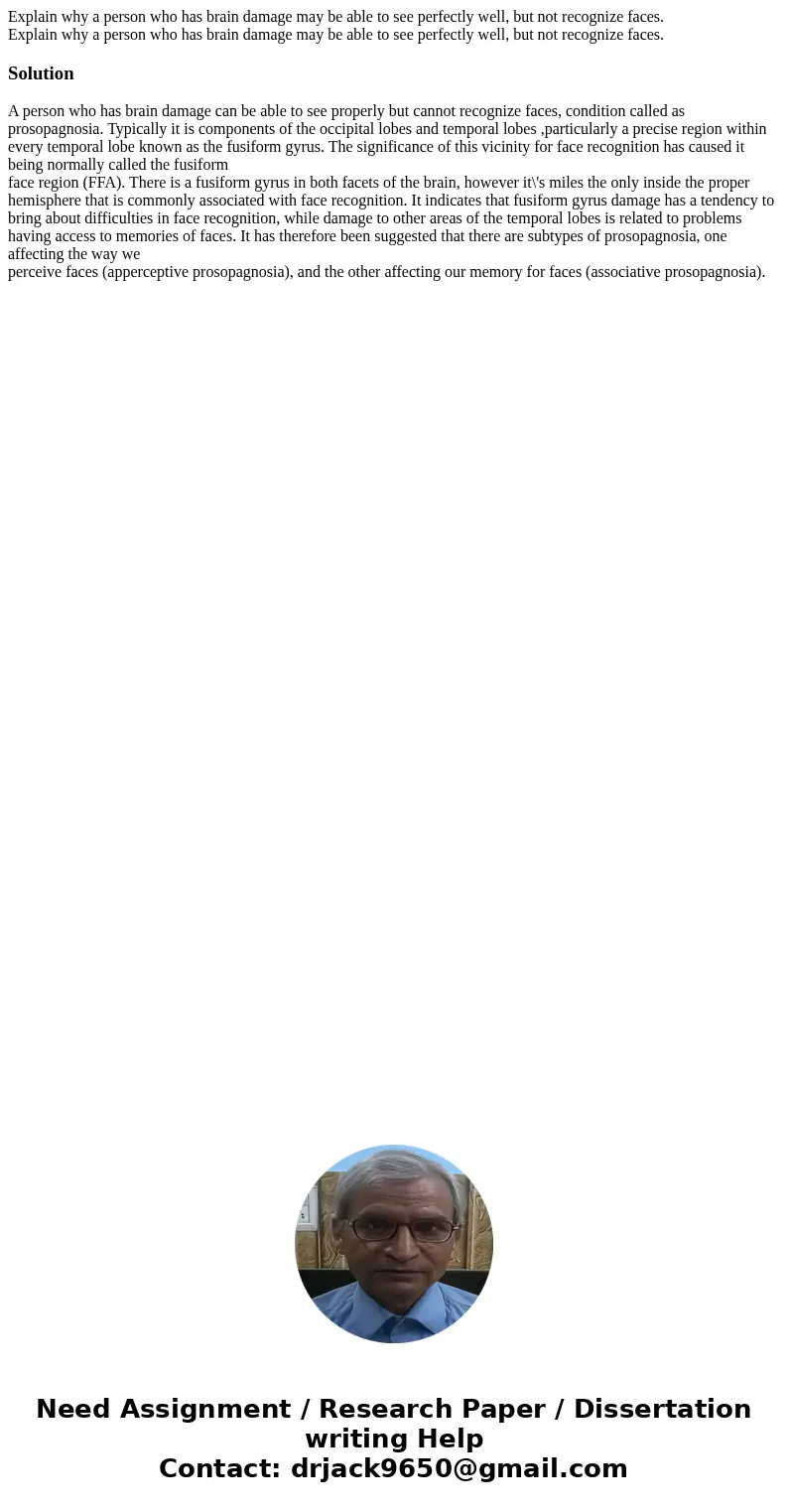Explain why a person who has brain damage may be able to see
Solution
A person who has brain damage can be able to see properly but cannot recognize faces, condition called as prosopagnosia. Typically it is components of the occipital lobes and temporal lobes ,particularly a precise region within every temporal lobe known as the fusiform gyrus. The significance of this vicinity for face recognition has caused it being normally called the fusiform
face region (FFA). There is a fusiform gyrus in both facets of the brain, however it\'s miles the only inside the proper hemisphere that is commonly associated with face recognition. It indicates that fusiform gyrus damage has a tendency to bring about difficulties in face recognition, while damage to other areas of the temporal lobes is related to problems having access to memories of faces. It has therefore been suggested that there are subtypes of prosopagnosia, one affecting the way we
perceive faces (apperceptive prosopagnosia), and the other affecting our memory for faces (associative prosopagnosia).

 Homework Sourse
Homework Sourse